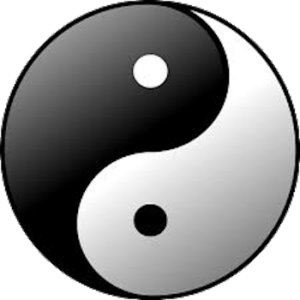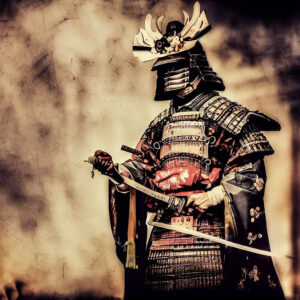Taoism
Philosophy, Practices and Influence in Martial Arts
Taoism is one of the oldest and most fascinating spiritual traditions of China, which has profoundly influenced the culture, art, medicine, and science of this country. But what is Taoism and what are its fundamental principles? In this article, we will try to answer these questions, based on the works of the main Taoist masters and the available historical sources.
Laozi and the Foundation of Taoism
Laozi is considered the founder of Taoism and the author of the Tao Te Ching. Having lived between the 6th and 5th centuries BC, Laozi was a philosopher and sage whose primary teaching was to live in harmony with the Tao. Little is known about his life, but it is said that he worked as an archivist in the court of the Zhou dynasty before retiring to solitude to live in harmony with nature. The Tao Te Ching, his most famous text, is a short but meaningful work, consisting of 81 chapters that expound the principles of Taoist wisdom through aphorisms and poetry. Laozi has had a profound influence not only on Chinese philosophy but also on art, medicine, and general culture.
The Tao and the Dao De Jing
The term Taoism is derived from the Chinese character 道 (dào), which means “way,” “path,” “principle,” or “doctrine.” Taoism can be understood as both a philosophy and a religion, although these two dimensions are not always easily distinguishable. Taoist philosophy is primarily based on the works attributed to Laozi and Zhuangzi, two sages who lived between the 4th and 3rd centuries BC, who expressed a worldview based on harmony with the Tao, the primal and indefinable essence of all things.
The Tao is the key concept of Taoism, but also the most difficult to define. It is an original, eternal, invisible, and ineffable principle that generates and sustains all that exists. The Tao is not a personal god, but a transcendent and immanent reality at the same time, which manifests itself through the cyclical and harmonious becoming of nature. The Tao cannot be expressed in words but can only be perceived intuitively or indicated by symbols. The fundamental text of Taoism, the Dao De Jing (The Book of the Way and Its Power), attributed to Laozi, begins thus:
“The Tao that can be told is not the eternal Tao,
The name that can be named is not the eternal name.
The nameless is the beginning of heaven and earth;
The named is the mother of the ten thousand things.”
The Dao De Jing is a short but meaningful work, composed of 81 chapters in poetic form. It expounds the principles of Taoist wisdom, which are based on the observation of nature and spontaneous adaptation to its laws. The Taoist sage does not act according to their own desires or social conventions but follows the natural flow of things, without forcing or resisting. They practice wu wei (无为), that is, non-action, which consists in doing what is necessary without effort or attachment. They cultivate de (德), that is, virtue or inner power, which derives from harmony with the Tao. They remain simple, humble, peaceful, and compassionate towards all beings.
Spontaneity and the Philosophy of Zhuangzi
Another fundamental text of Taoism is the Zhuangzi (The Book of Zhuangzi), attributed to Zhuangzi, a sage who lived between the 4th and 3rd centuries BC. This text is longer and more varied than the Dao De Jing, and it contains stories, dialogues, parables, and anecdotes that illustrate the Taoist view of life. The Zhuangzi emphasizes the value of spontaneity, freedom, humor, and relativism. According to Zhuangzi, reality is subject to constant change and transformation, and there is no absolute truth or universal morality. Everything depends on one’s perspective and circumstances. The Taoist sage knows how to accept the diversity and contradictions of the world, without judging or attaching themselves to anything. They know how to enjoy the small things and the wonders of nature, without worrying about the past or the future. They know how to transform and adapt to any situation, without losing their essence.
Schools and Currents of Taoist Religion
Taoist religion originated as a form of folk worship, based on practices of alchemy, magic, divination, and the veneration of ancestors and spirits. Its purpose was to obtain health, prosperity, longevity, and immortality, both for oneself and for society. Taoist religion developed into various schools and currents, which differed in their doctrines, practices, and deities worshipped. Among the main Taoist schools, we can mention the School of the Supreme Clarity (上清派), founded in the 4th century AD, which was based on the invocation and visualization of the Three Pure Ones, the highest Taoist deities; the School of the Celestial Master (天師道), founded in the 5th century AD, which was based on the authority of the Celestial Master, the spiritual and political leader of Taoism; and the School of the Complete Reality (全真道), founded in the 12th century AD, which was based on the combination of internal alchemy, meditation, and martial arts.
Taoist religion was also enriched by the influence of other religious traditions, such as Buddhism and Confucianism, creating an original and varied syncretism. Taoism also spread to other Asian countries, such as Japan, Korea, and Vietnam, where it mixed with local cultures. Today, Taoism has about 400 million followers worldwide, especially in China, where it is recognized as one of the three traditional religions, along with Buddhism and Confucianism. Taoism continues to exert its fascination even in the West, where it is appreciated for its practical wisdom, its ecological vision, and its openness to mystery.
Harmony of the Tao in Martial Arts
Taoism is a philosophical and religious tradition with deep roots in Chinese culture and worldview. Taoism provides a conceptual framework that aligns closely with the principles and goals of Chinese martial arts. The concept of “Wu Wei,” which translates to “non-action” or “effortless action,” is one of the foundations shared by both disciplines.
Taoist martial arts are often focused on giving and redirecting, without direct retaliation; however, when using attacks, the goal is often to injure without killing. Taoists did not believe in needless violence, and if a student could not win a duel without killing an opponent, this was considered a weakness.
Taoist martial arts are also based on the understanding and harmonization with the Tao, the supreme principle that governs the universe. The Tao is beyond words and definitions but can be perceived through meditation and practice. The Tao manifests itself through the flow of Qi, the vital energy that circulates in all living beings.
Among Taoist martial arts, the most popular is Taiji (太极拳 Tàijíquán), an internal style that emphasizes softness, fluidity, and balance. Taiji is inspired by the classical texts of Taoism, such as the Dao De Jing (道德经) and the Zhuangzi (庄子), which express the wisdom and ethics of the Tao. Taiji is practiced both as a form of exercise and self-defense, but also as a path to physical and spiritual well-being.
Influences of Taoism in Contemporary Culture
Taoism has had a profound influence on Western culture, particularly in the realms of philosophy, meditation, art, and wellness. Books such as Fritjof Capra’s “The Tao of Physics” and Dan Millman’s “The Way of the Peaceful Warrior” have introduced Taoist principles to a wider audience. Practices like Tai Chi and Qigong have gained immense popularity for their benefits to physical and mental health. Taoism’s reverence for nature and emphasis on harmony and balance deeply resonate with contemporary concerns about ecology and sustainability.
Furthermore, the concept of “Wu Wei,” or effortless action, has found applications in fields like leadership and management, promoting a more fluid and less coercive approach. Taoist principles of simplicity and spontaneity have been adopted in various artistic movements, influencing everything from minimalist architecture to contemporary dance. Taoism has also significantly influenced contemporary psychology, with meditation and mindfulness techniques directly derived from ancient Taoist practices.
Taoism has even found expression in modern technologies, with user interface design striving to be intuitive and “frictionless,” mirroring the Tao’s principles of ease and naturalness. Finally, Taoism’s emphasis on the cyclical nature of life and the interconnectedness of all living beings inspires many to adopt more sustainable and environmentally friendly lifestyles, highlighting the importance of living in harmony with nature.














